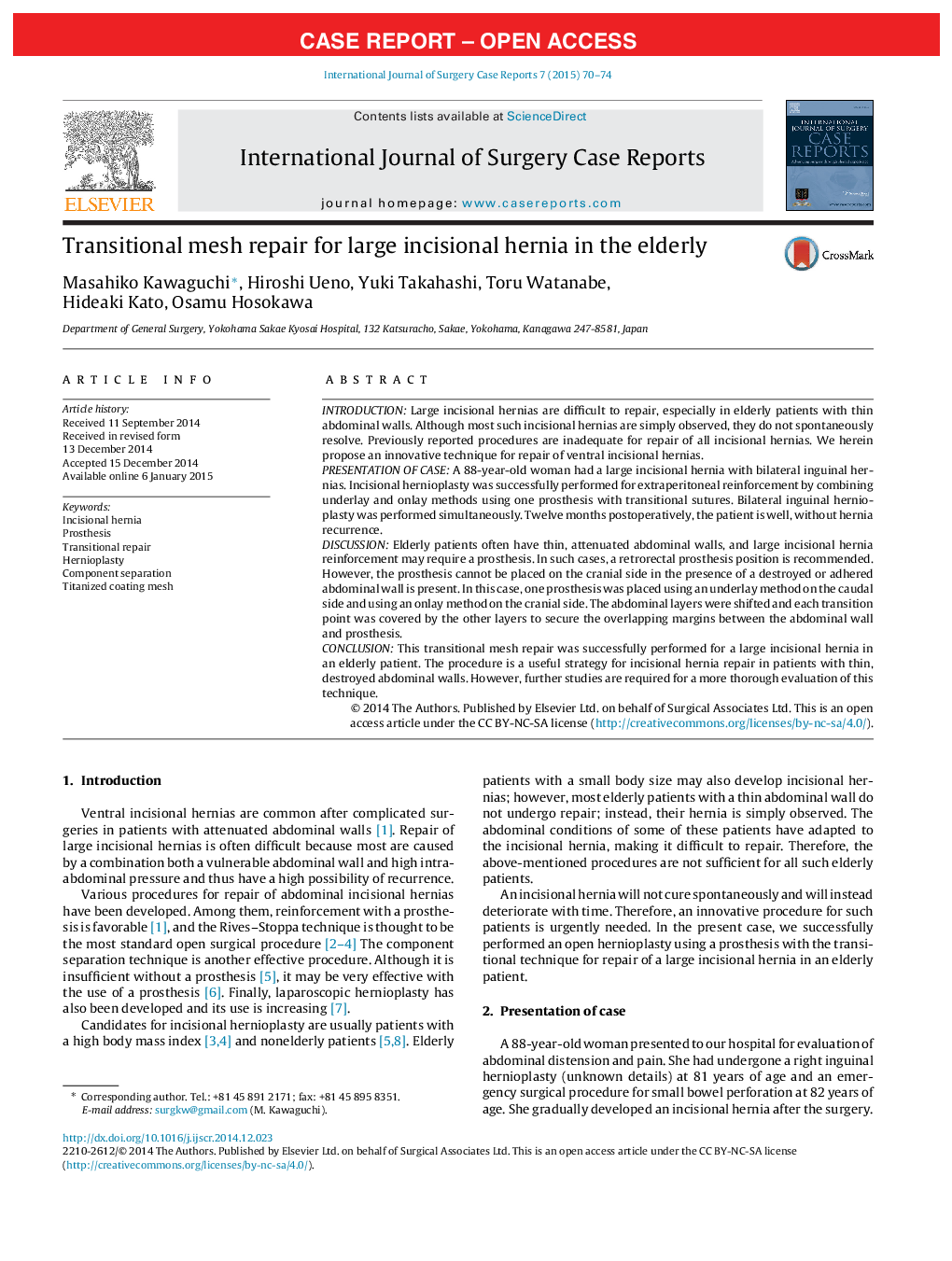| کد مقاله | کد نشریه | سال انتشار | مقاله انگلیسی | نسخه تمام متن |
|---|---|---|---|---|
| 4289127 | 1612108 | 2015 | 5 صفحه PDF | دانلود رایگان |
• Large incisional hernias are difficult to repair, especially in elderly patients with thin abdominal walls.
• For an incisional hernia with thin destructed abdominal wall, combined onlay and underlay incisional hernia repair using one prosthesis was performed.
• The abdominal wall at the transitional zone is shifted to the rectus abdominis and the anterior sheath, in order to cover the transitional zone with other abdominal layers.
• We report a transitional mesh repair for a large incisional hernia in an elderly patient.
IntroductionLarge incisional hernias are difficult to repair, especially in elderly patients with thin abdominal walls. Although most such incisional hernias are simply observed, they do not spontaneously resolve. Previously reported procedures are inadequate for repair of all incisional hernias. We herein propose an innovative technique for repair of ventral incisional hernias.Presentation of caseA 88-year-old woman had a large incisional hernia with bilateral inguinal hernias. Incisional hernioplasty was successfully performed for extraperitoneal reinforcement by combining underlay and onlay methods using one prosthesis with transitional sutures. Bilateral inguinal hernioplasty was performed simultaneously. Twelve months postoperatively, the patient is well, without hernia recurrence.DiscussionElderly patients often have thin, attenuated abdominal walls, and large incisional hernia reinforcement may require a prosthesis. In such cases, a retrorectal prosthesis position is recommended. However, the prosthesis cannot be placed on the cranial side in the presence of a destroyed or adhered abdominal wall is present. In this case, one prosthesis was placed using an underlay method on the caudal side and using an onlay method on the cranial side. The abdominal layers were shifted and each transition point was covered by the other layers to secure the overlapping margins between the abdominal wall and prosthesis.ConclusionThis transitional mesh repair was successfully performed for a large incisional hernia in an elderly patient. The procedure is a useful strategy for incisional hernia repair in patients with thin, destroyed abdominal walls. However, further studies are required for a more thorough evaluation of this technique.
Journal: International Journal of Surgery Case Reports - Volume 7, 2015, Pages 70–74
